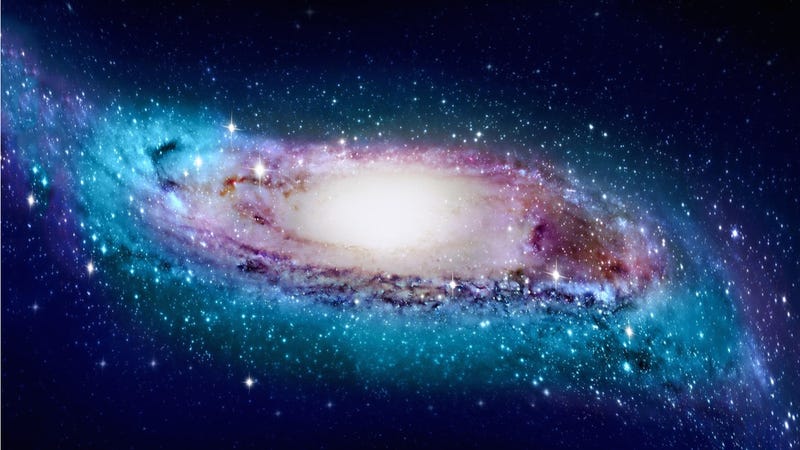
A new analysis of pulsing stars has revealed the Milky Way’s twisted shape.
Scientists have known since the 1950s that the spiral-shaped Milky Way’s disk is warped, bending by thousands of light-years at its outskirts. Now, researchers have created a map of stars called Cepheid variables in order to create a 3D map of our galaxy and understand the warping better than ever.
Though past analysis has established that the hydrogen gas in our galaxy takes on a warped shape, questions have remained as to whether stars follow the same shape or not. So the researchers from universities in China and Australia built a model of the Milky Way’s disk using a well-known distance measure: stars called Cepheid variables. Cepheids pulse with a regular period that varies with their brightness. That means that if you know the pulsation period, you can infer the star’s actual luminosity, then compare that with the luminosity observed from Earth in order to determine the distance.
The researchers gathered 2,330 Cepheid variables catalogued by an infrared telescope called the Wide-field Infrared Survey Explorer, and whittled down the list to 1,339 stars based on their distance, models of the Milky Way, and other factors. You can see their final plot in the video below, published in Nature Astronomy.
The stars appeared to take on the same shape as the hydrogen gas, warping out to around 50,000 light-years from the Milky Way’s center. However, the hydrogen gas appears to warp more than the stars do, specifically on one of the disk’s sides.
Advertisement
The warping might sound strange compared to common assumptions about how the Milky Way looks, but isn’t a huge surprise. Scientists have observed other similarly warped galactic disks, and the team inferred that the rotational forces from the inner galaxy were producing the warped shape.
One researcher not involved with this study, Annie Robin, astrophysicist at the Observatoire de Besançon in France, thought the difference between the hydrogen and the Cepheid data was quite surprising, though the team’s results did agree with previous papers. She also pointed out it would have helped to include more data. “The study is good, but the sample used is somewhat still small (1,339),” said Robin. “This is a pity because Gaia has just published a much larger sample of Cepheids (9,575). Hence, it would be worth it to redo the study with Gaia sample, and to refine the model.”
But the research solidifies something that you might not know about our galaxy—if you picture it as a beautiful, flat spiral akin to images of Andromeda, it’s time to repaint that picture as a floppy, curved disk of stars and gas.
Advertisement
Bagikan Berita Ini














0 Response to "New Star Map Reveals the Milky Way Is Warped - Gizmodo"
Post a Comment